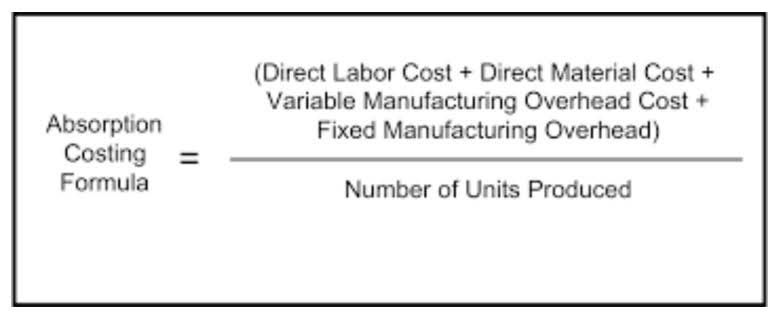About Form 1099-S, Proceeds from Real Estate Transactions Internal Revenue Service

A 1099-DIV is typically sent to a taxpayer if dividend income was earned throughout the tax year. Dividends are usually in the form of cash payments paid to investors by corporations as a reward for owning their stock or equity shares. Form 1099 is used to report certain types of non-employment income to the IRS, such as dividends from a stock or pay you received as an independent contractor. If you received your 1099-S Form for the sale of a business or rental property, this is reportable on Schedule D and on Form 4797. The purpose of IRS Form 1099-S is to ensure that sellers are reporting their full amount of capital gains on each year’s tax return. Even if you don’t receive a Form 1099 you expect, you don’t need to ask for it, just report the amount of income on your tax return and the IRS will have no problem with that.

When a debt is canceled, no money is actually made by the individual. This occurs when a creditor who is owed by a person cancels all or a part of a debt that is outstanding. As an independent contractor, you have the right to control what you work on and how it will be done. Any independent contractor may receive at least one 1099 form every year. A 1099-Q is for Payments From Qualified Education Programs and it’s for school-related payments that are paid to a parent, child, or child’s school from a 529 education savings plan.
forms for investment income
In certain situations, however, the form does not have to be filed. For example, if the sale price of real estate is less than $250,000 and the property was the seller’s personal residence for two of the last five years, the transaction does not have to be reported. An original issue discount applies to bonds or notes that are issued at less than face value, and the discounted amount is considered interest income.
- As of 2020, Form 1099-MISC no longer reports non-employee compensation to independent contractors.
- Yes, the 1099-Q reports money that you, your child, or your child’s school receive from a 529 plan.
- If you or your business received dividends or capital gains of more than $10 from a taxable account, you’ll receive Form 1099-DIV from your brokerage or financial institution.
- When you receive this 1099 form from your broker, you should use the information to calculate the taxable OID for your tax return.
If there is an error on your Form 1099, you should contact the payer (the person you work for) or issuing agency to request a corrected document. If you don’t receive the corrected form by the end of February, you may call the IRS for help. For assistance in preparing, sending, and submitting 1099 documents, you may want to consult your CPA or a tax advisor. QuickBooks offers 1099 e-filing services with QuickBooks Payroll and QuickBooks Contractor Payments.
What Is a 1099-INT Form?
Generally, you must report payments to independent contractors on Form 1099-NEC in box 1. You must also file Form 1099-NEC for each person from whom you have withheld any federal income tax (report in box 4) under the backup withholding rules regardless of the amount of the payment. If you are in the trade or business of purchasing fish for https://www.bookstime.com/bookkeeping-services/orlando resale, you must report total cash payments of $600 or more paid during the year to any person who is engaged in the trade or business of catching fish. You are required to keep records showing the date and amount of each cash payment made during the year, but you must report only the total amount paid for the year on Form 1099-MISC.
Typically, you will use Schedule C and attach it to your Form 1040. A 1099-K must be filed when your transactions exceed $20,000 or 200 transactions in number. The information on the 1099-K is used to complete your tax return schedules for your business, such as gross receipts or sales, and expenses. Just because you receive a 1099 tax form doesn’t mean you automatically owe taxes on the income you were paid. You might be able to use deductions or other tax loopholes to eliminate or reduce your tax liability. No matter if you end up owing or not, however, it’s vital that you report the income listed on the 1099 to the IRS if required.
What Is the Difference Between a W-2 and Form 1099?
Understanding business taxes can be daunting, especially when it comes to the different types of 1099 forms. Besides a regular paycheck or what is reported on a W-2 form, there are many ways to earn income throughout the year. This form is issued directly what are 1099s by the Social Security Administration whenever you receive any Social Security benefits. When you are required to pay income tax on any of the benefits you received, this form provides the information needed to determine the taxable amount.

Form 1099-CAP, Changes in Corporate Control and Capital Structure, applies to shareholders of a privately held corporation that underwent a change in control or a significant change in its capital structure. When you are a shareholder of such a corporation and receive cash, stock or other property, the corporation should file a 1099-CAP with the IRS and provide you with a copy. All 1099s are required to be sent out to recipients by Jan. 31 of each calendar year.
If other property or services were exchanged, see the box 4 instructions, later. Anyone responsible for closing a sale or exchange of real estate furnishes this statement to you, reporting the proceeds. Again, the proceeds from the sale of your house or other real estate aren’t necessarily taxable, so do your homework. However, there are many exceptions and offsets that reduce taxable income. For example, let’s say a taxpayer has a gain from the sale of a home, meaning the selling price was higher than the original cost basis.
Since money in a 529 is not usually subject to taxes when they’re used for specific education expenses, it is just for record purposes. Form 1099-NEC is another common type of 1099 and is used to report a certain level of income paid outside of W-2 wages. Sole proprietors and companies of all sizes will often use contractors or freelancers for a range of different jobs, such as bookkeeping, consulting, or handiwork. In this case, those businesses would issue a 1099-NEC to anyone they paid more than $600 for a service. You’ll need this form if you or any qualifying family members received advance payments for health insurance.
So again, for many people, a 1099-SA is simply proof that the money left the account and went to you. It’s essential to consult a tax professional if you own a business and are unsure about issuing 1099s. Also, seek tax help if you’re a taxpayer with questions about your non-employment income or how to report that income properly to the IRS.
- File Form 1099-MISC by February 28, if you file on paper, or March 31, if you file electronically.
- However, if sales taxes are imposed on you (as the buyer) and collected from you by the service provider, do not report the sales taxes on Form 1099-MISC.
- If you made money outside your permanent job, you’ll likely encounter one or more of the following forms.
- The issuer must also file Form 1099-SB if the policy has transferred to a foreign person.
- You are required to keep records showing the date and amount of each cash payment made during the year, but you must report only the total amount paid for the year on Form 1099-MISC.
- Even if you don’t have the appropriate forms, you’re still responsible for paying the taxes you owe.
Report in box 3 compensation of $600 or more paid in a calendar year to an H-2A visa agricultural worker who did not give you a valid TIN. You must also withhold federal income tax under the backup withholding rules. For more information, go to IRS.gov and enter “foreign agricultural workers” in the search box.
The account number is required if you have multiple accounts for a recipient for whom you are filing more than one Form 1099-NEC. If you are required to file Form 1099-NEC, you must furnish a statement to the recipient. For more information about the requirement to furnish a statement to each recipient, and truncation, see part M in the current year General Instructions for Certain Information Returns. Certain Medicaid waiver payments may be excludable from income as difficulty-of-care payments.




